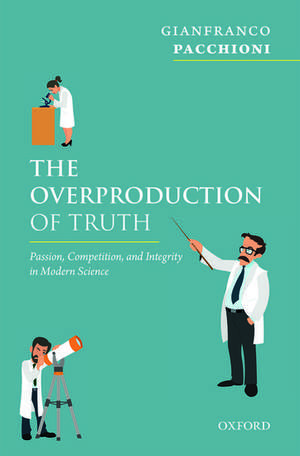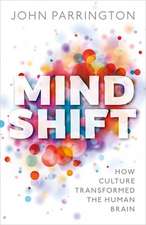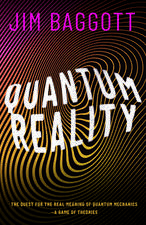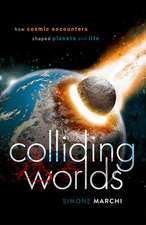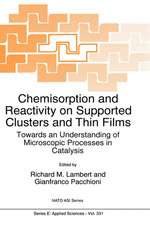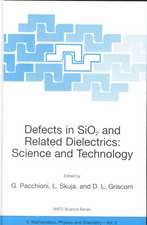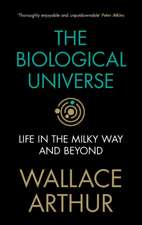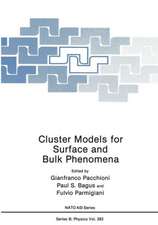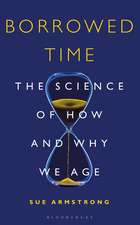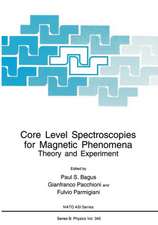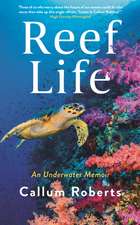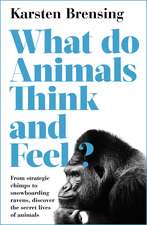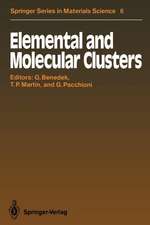The Overproduction of Truth: Passion, Competition, and Integrity in Modern Science
Autor Gianfranco Pacchionien Limba Engleză Hardback – 23 aug 2018
Preț: 184.46 lei
Preț vechi: 199.17 lei
-7% Nou
Puncte Express: 277
Preț estimativ în valută:
35.30€ • 38.33$ • 29.65£
35.30€ • 38.33$ • 29.65£
Carte tipărită la comandă
Livrare economică 11-17 aprilie
Preluare comenzi: 021 569.72.76
Specificații
ISBN-13: 9780198799887
ISBN-10: 0198799888
Pagini: 170
Ilustrații: 6 grayscale line and 2 grayscale halftone figures
Dimensiuni: 137 x 199 x 15 mm
Greutate: 0.31 kg
Editura: OUP OXFORD
Colecția OUP Oxford
Locul publicării:Oxford, United Kingdom
ISBN-10: 0198799888
Pagini: 170
Ilustrații: 6 grayscale line and 2 grayscale halftone figures
Dimensiuni: 137 x 199 x 15 mm
Greutate: 0.31 kg
Editura: OUP OXFORD
Colecția OUP Oxford
Locul publicării:Oxford, United Kingdom
Recenzii
This is an excellent book exploring the growth and impact of science, scientific research, and scientists. Are there too many journals? Too many scientists? Is there too much pressure on scientists to publish, and can scientists be trusted? Pacchioni's book is timely as truth is increasingly viewed as subjective rather than objective.
Gianfranco Pacchioni has produced a sharp book that touches upon a very hot subject which has caused broad concern among committed scientists: the exponential increase in the number of journals and published papers, and the ever increasing use (or abuse) of bibliometric numerical indices. One could hardly put together a better lineup of timely topics. I imagine there could be as many interested readers in this book as there are scientists around the world.
Pacchionis eminently readable description of the structure and practice of modern science, including many of its foibles, will be added to my recommended reading list for scientific neophytes, veteran practitioners and those seeking to understand how modern science works. In an easy and elegant style he covers the full range of scientific activity including graduate training to the exigencies of employment, the execution of experiments, the culture of publishing, the ramifications of explosion of the scientific population and the unfortunate examples of fraud. Highly recommended.
Gianfranco Pacchioni has produced a sharp book that touches upon a very hot subject which has caused broad concern among committed scientists: the exponential increase in the number of journals and published papers, and the ever increasing use (or abuse) of bibliometric numerical indices. One could hardly put together a better lineup of timely topics. I imagine there could be as many interested readers in this book as there are scientists around the world.
Pacchionis eminently readable description of the structure and practice of modern science, including many of its foibles, will be added to my recommended reading list for scientific neophytes, veteran practitioners and those seeking to understand how modern science works. In an easy and elegant style he covers the full range of scientific activity including graduate training to the exigencies of employment, the execution of experiments, the culture of publishing, the ramifications of explosion of the scientific population and the unfortunate examples of fraud. Highly recommended.
Notă biografică
Gianfranco Pacchioni is Vice-Rector for Research at the University of Milano Bicocca. He received his Ph.D. in Physical Chemistry at the Free University of Berlin. He has worked at the IBM Almaden Research Center in California and at the Technical University of Munich. His main interests are theory and electronic structure of oxides (bulk, surface, thin films, nanostructures), supported metal clusters, materials for catalysis, photocatalysis and energy production.Pacchioni has received various awards, including the Nasini Medal and the Pisani Medal of the Italian Chemical Society, the National Prize "Federchimica," the Alexander von Humboldt Award, and the Blaise Pascal Medal of the European Academy of Sciences. He is Fellow of the Accademia Nazionale dei Lincei, the Academia Europaea, and the European Academy of Sciences.
